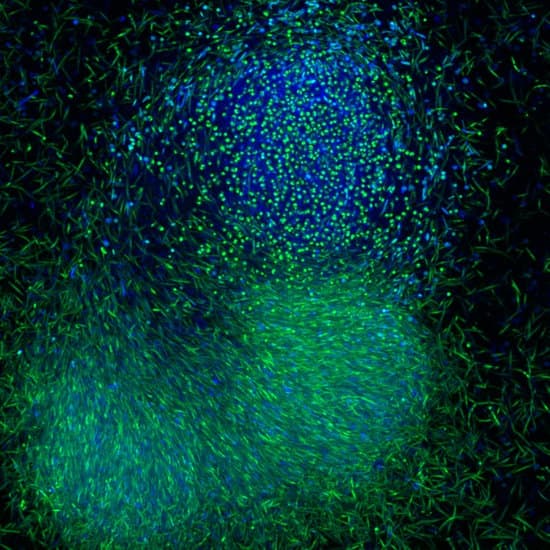Myxo-ing it up: Taking a cue from weirdly intriguing bacteria
Myxo is one weird bacterium. Short for Myxococcus xanthus, Myxo hunts in packs much as wolves do: surrounding, attacking and devouring the microorganisms that serve as their prey. When food is scarce, however, Myxo sheds its wolves' clothing, and takes one of three distinct paths that could hold clues about how to fight antibiotic resistance, as well as the troublesome formation of mucus-like bacterial biofilms that gunk up pacemakers and other medical devices, lead to obstructed lungs and chronic infections in people with certain diseases, and lead to the biofouling that clogs industrial pipes, according to Assistant Professor and Myxo researcher Penelope Higgs.

"What happens when there is no more prey, is that Myxo stops crawling outward to find food and instead begins crawling inward, and the individual bacteria climb on top of one another to form a bunch of little haystack-shaped mounds, each containing about 100,000 of these bacteria," she described. During this process, some of the bacteria quickly die in what is known as "programmed cell death" and serve as food for their neighbors. The remaining bacteria hunker down, slowing their metabolism and developing a resistant coat around themselves to become spores. Groups of these spores, known as fruiting bodies, then lie in wait until prey returns.
A third group of Myxo doesn't join the mound at all, but rather strikes out on its own, she said. "These bacteria turn down their metabolism as well, but they don't make the spore coat. They just hang out in a quiescent 'persister-like' state, which is a dormant state that's different from the spores."

Higgs and her research group are beginning to reveal some of the previously unknown details about what prompts bacteria to take the different paths to programmed cell death, spore or a non-spore persister cell. This understanding could help identify vulnerabilities that could be useful in the fight against antibiotic resistance and biofilms. "The reason it's advantageous to study quiescent states in Myxo compared to many other bacteria is that very few other bacteria have these different cell fates spatially segregated like they are in Myxo, and that makes it much easier for us to separate them and study the processes that cause them to form in the first place.
"One of the things the researchers have found is that Myxo has numerous signaling systems involved in the segregation of the bacterial cells into one of the three fates. She explained, "A signal system is like a little bacterial brain network, so it's just a way for cells to get information either internally or externally from the cell and then coordinate some output to it, which could be changes in genes that are expressed, changes in motility, or some other change."
Proteins play a key part of the signaling systems, so Higgs and her group are especially interested in the genes that encode those proteins. To study this, they identify the genes that are likely to be important in signaling, and delete them (or "knock them out") one by one to see what happens to cell-fate segregation. "Once we find a gene that affects the segregation process, we use a combination of biochemical, genetic and cell biology approaches to pick that signaling system apart," she said. They are also studying a protein called transcription factor MrpC, which regulates many of the signal-related genes, and its role in cell-fate segregation.
"One of the most interesting things that we've figured out just recently - and we haven't even published it yet - is that if we knock out all of those signaling systems (involved in cell-fate segregation) - we can convert every single cell in the population into a spore," she said. The resulting spores are laid out in a single layer rather than forming fruiting bodies, and preliminary findings suggest they are more susceptible environmental insults (like UV damage from the sun or desiccation) than are spores in fruiting bodies. "That means that we've completely perturbed what it is they should be doing, and rewired them into some other fate. And now, we're trying to understand what the consequences of this would be in the real world," she said.

By describing ways to disrupt signal-associated genes and proteins, Higgs hopes to assist the fight against antibiotic-resistant quiescent bacteria, infection-causing biofilms, and biofouling environmental bacteria. "If we can we define how these networks work, other research groups can then look at our work and say, OK, here are some interesting mechanisms that maybe we can target to interfere in these health- or environmental-related processes. Our work is about making the incremental discoveries that will help put together the whole picture of Myxo and cell-fate segregation overall."
Dr. Higgs' Myxo research is funded by a $685,000 National Science Foundation CAREER grant through 2022, and involves participation by both graduate and undergraduate students. "The undergrad component is really important, because studies show that undergraduate students who have the opportunity to get into a lab and see how we're tackling these research problems, often have improved grades because this applied education backs up all the theories they're generally getting in classes," she said. "The other thing is it also exposes them to the idea of the benefit of research and how it is behind society moving forward, and that is not easy to understand if they aren't in it. in it." In addition, she said the presence of undergraduate students helps graduate students develop as mentors. She adds, "It's just an excellent experience all the way around."